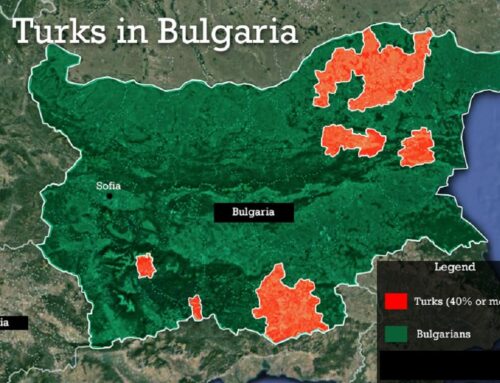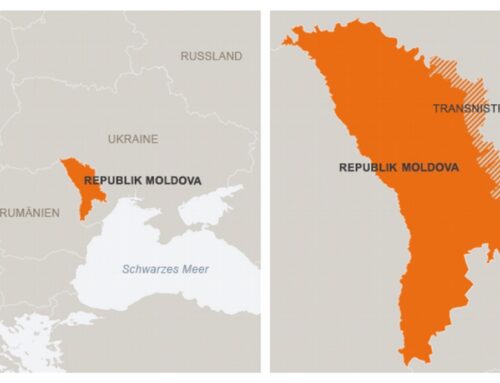1. Introduction
The history of Roma discrimination in Europe dates back to their arrival from India seven hundred years ago. This tendency turned Roma into marginalized people through enslavement as in Romania in the XV-XIX centuries[1]. They were deprived of their rights and depicted as a threat, evil “Other” for Europeans. The issue of identity became a matter of life and death for Roma.
Today their identity is still rejected by the representatives of formalized institutions. This fact makes Roma integration a challenge for European policy based on respect for human rights.
Our research question is: How to reframe the EU institutional approach to minority protection more effectively by enhancing the Union competences and civil society involvement?
The study aims at better understanding of the challenges in the EU policy framework. The specific objectives of the study are:
1) Define the main actors and policy mechanisms regionally.
2) Analyze legal and policy gaps in current policy implementation of Hungary and Romania by comparative analysis.
3) Draw conclusions and provide a set of policy recommendations for Roma inclusion.
The main sources of this article are relevant legal documents and case study of Romania and Hungary.
In the context of our research the structure of the article is as follows. The first section introduces the research question, sources, and method. Part two outlines the main actors under international law and analyzes the gaps in regional standards of minority protection by means of case study of Romania and Hungary. In conclusion, we provide policy recommendations for NGOs participation and a practical way to implement the policy as the European institutional approach.
2. An Outline of the Main Actors and Legal Grounds for Roma Integration Policy
Under international law the state is the main actor responsible for protection of minority rights. The International Convention on the Elimination of All Forms of Racial Discrimination[2], the Convention on the Elimination of All Forms of Discrimination against Women[3], the Convention on the Rights of a Child[4], and the Convention on the Rights of Persons with Disabilities[5] prohibit the ethnic ground of discrimination.
The Convention for the Protection of Human Rights and Fundamental Freedoms[6] (ECHR) protects in Article 14 the right of the minorities to have freedoms without discrimination.
The Charter of the Fundamental Rights of the European Union imposed an obligation on states to protect economic and social rights of the minorities, especially right to education (Article 14, para 3): “The freedom to found educational establishments with due respect for democratic principles and the right of parents to ensure the education and teaching of their children in conformity with their religious, philosophical and pedagogical convictions shall be respected, in accordance with the national laws governing the exercise of such freedom and right”[7].
The Bolzano Declaration[8] established the dual responsibility of the state to protect national minorities as well as bilateral and multilateral instruments on the basis of general principles of human rights.
However, these international and regional standards did not lead to significant improvement for anti-Gypsyism. Anti-Gypsyism is a particular form of racism directed towards Roma that has many manifestations: hate speech (also at the political level), forced evictions, segregation, discriminatory policy making or implementation[9].
In the letter on 23 June 2016 to the Prime Minister of Romania the CoE Human Rights Commissioner Muižnieks shamed the country with a serious non-compliance with “a practical enforcement of the Directive 2000/43/EC”[10] , namely, “Anti-Roma public rhetoric, forced evictions of Roma, segregated education of Roma children”[11]. Thus, institutional forms of Roma discrimination continue without any condemnation by the national authorities. The solution elaborated by the European institutions is the EU framework for National Roma Integration Strategies. This framework is an achievement for Roma rights; however, it has a non-binding legal character as a soft policy tool.
The main actors of the Roma integration policy are the European institutions, Member States, NGOs as civil society watchdogs, and Roma communities.
Previous research[12] has equally acknowledged that the shifting of focus towards Roma in complying with EU principles and values has had profound implications for the kinds of EU policies that have developed under this framework. There is also the issue of financial accountability of the exact ways in which EU-funded projects do actually contribute to addressing the integration of Roma communities in compliance with EU values and principles according to Article 2 TEU[13] and the EU Charter of Fundamental Rights.
The EU institutions focus on minority protection in the form of Roma inclusion in their home state. This policy has been driven by the EU semester – paying states to implement policies to reduce the social exclusion of minorities (mainly Roma) and then checking what they have done and how effective it has been. The policy towards Roma integration was linked to the issue of democracy – the majorities in some Member States are willing to vote for populists who support anti-minority opinions, even extreme ones.
The previous European Union framework of 2011 focused on economic integration of Roma. On 7 October 2020, the Commission issued a new EU Roma strategic framework. This approach complements the economic integration of Roma by effective equality and meaningful participation: “Where is the essence of humanity when every single day Roma people are excluded from society…?”[14]
According to the targets of this framework till 2030 Roma should engage in economic, social, political and cultural life. This institutional approach is elaborated by the European Commission and its agencies (for instance, the EU Agency for Fundamental Rights), the European Parliament, the European Council, Eurofound, etc. The results of the Eurofound e-survey demonstrated: “Existing inequalities are widening because of the disproportionate impact of the pandemic on vulnerable groups. The findings show that difficulties in making ends meet increased significantly among those already in a precarious situation…a quarter of people living in Europe indicate a hesitancy toward a COVID-19 vaccine”[15]. The health inequality of Roma population is underlined by a number of factors: missing data in national and regional dataset, absence of medical insurance, the social exclusion and discrimination.
In the numerous cases of Roma rights violations by local authorities the European Court of Human Rights has condemned states, especially Romania and Hungary, on the basis of principle of equal treatment led down by the Council Directive 2000/43.
In the case Gheorghita and Alexe v.Romania 32163/13[16] on 31 May 2016 Romania was found in violation of Article 3 (inhuman treatment and punishment) of the Council Directive 2000/43. The applicants of Roma origin, Stela Gheorghita and Gabriel Alexe Gheorghita, filed criminal complaints against five police officers. The officers tortured Mr.Gheorghita and Ms.Georghita, however, the Romanian Court of Appeal justified the reaction of the police.
The European Court of the Human Rights recalling the respondent State’s obligation, under Article 46, paragraph 1 of the Convention for the Protection of Human Rights and Fundamental Freedoms to put an end to violations and protect Roma minority.
In the case Horvath and Kiss v.Hungary[17] the judgement established that sending Roma children to remedial schools constituted discrimination based on ethnic, social, and economic background. The issue of education is vital for European society. A systematic lack of access to education results in a vulnerability for medical insurance. In time of COVID-19 low rates of vaccination among Roma children cause low life expectancy and spread of disease among Roma comparing to non-Roma population.
In the case Vona v.Hungary[18] the Hungarian Guard Association called for the defence of “ethnic Hungarians” against fake “Gypsy criminality” during rallies in villages with large Roma population. These acts of discrimination were not prohibited by the local authorities. For this reason, we can conclude that it is a European-wide challenge to integrate Roma population.
Such treatment caused by past discrimination need to be addressed through positive measures. The European Parliament gave an interpretation of the principle of non-discrimination, namely:
- Member States violate this principle if they fail to implement positive measures.
- Member States have a responsibility to collect data to monitor policy implementation.
- Member States have a positive obligation to encourage citizens’ participation in drafting policies.
Roma integration has many policies: providing safe and sanitary housing solutions, enabling social and political participation and representation in the public dialogue, access to education and employment, and respect for Roma history and culture.
Fight with anti-Gypsyism involves the activity of NGOs. For instance, FOMOSO discusses European coordination of Roma integration methods in different countries informing European citizens and authorities about the best practices.
A good example represents a state Treaty[19] signed by the land of Baden-Württemberg with the German Regional Roma Association in 2014. The joint Council and the Documentary Cultural Centre of German Sinti and Roma safeguard the rights and freedoms of the Roma population promoting their history and culture. The city of Heidelberg supports this dialogue organizing exhibitions, lectures, and concerts. For instance, the Holocaust of the Sinti and Roma is represented in the permanent exhibition documenting the history of the Sinti and Roma. As a result of the Council’s activity a local council for the affairs of Sinti and Roma was established for the discussion of all affairs concerning the local Roma population.
The different practices exist in Hungary and Romania. In Hungary live 750 000 Roma citizens. In order to prevent early school leaving among their children were created special centres, offering parental councelling, educational programmes for both children and their parents in the disadvantaged regions, early childhood development. To tackle discrimination in the labour market were introduced Roma mentors in public employment services. The gaps in these policies include a limited access of rural citizens to these programmes.
Healthcare measures involve awareness-rising campaigns on vaccination against COVID-19 among Roma[20]. However, the Anti-Gypsyism continues as a health inequality practice, for instance, the Prime Minister Gergely Gulyas considered that Roma could register for vaccination themselves without access to Internet and electricity.
Hungarian cities are now legally required to prepare a Local Equal Opportunity Plan with a financial support of the European Regional Development Plan. Anti-discrimination measures involve amendment of the penal law related to violence against the members of local communities.
Romanian governmental strategy lists the Department for Interethnic Relations, the National Council for Combating Discrimination, ministries as main actors directly responsible for the implementation of the strategy. At the local level there are municipalities with action plans for implementing this strategy. However, lack of funding made these action plans a paper solution. For instance, there are allocated places for Roma in high schools and universities viewed as discriminatory by majority of the population. Ministry of Education signed an order prohibiting segregation of Roma children in 2020[21]. However, the methodology for monitoring segregation was not drafted.
There is no national platform addressing anti-Gypsyism and this concept is missing from the discourse of different Romanian NGOs.
3. Recommendations and conclusion
FOMOSO activity is urgent for Roma targeted policy. First, providing understanding why such challenges exist. Second, communicating the issue and raising civil society awareness of facts instead of rumours and prejudices. Third, supporting the open dialogue contributing to the discussion of minority protection developments and monitoring Roma non-discrimination in practice on the basis of a European-wide approach formulated in the Regulation 2021/692[22]. This Regulation is funded by the Justice, Rights, and Values programme under multiannual financial framework for seven years (para 14): “Non-discrimination is a fundamental principle of the Union. Article 19 of the Treaty on the Functioning of the European Union (TFEU) provides for action to combat discrimination based on sex, racial or ethnic origin, religion or belief, disability, age or sexual orientation. Non-discrimination is also enshrined in Article 21 of the Charter. The specific features of diverse forms of discrimination, including direct, indirect and structural discrimination, should be taken into account and appropriate action should be developed in parallel to prevent and combat discrimination on one or more grounds. The Programme should support actions to prevent and combat all forms of discrimination, racism, xenophobia, afrophobia, anti-Semitism, anti-Gypsyism, anti-Muslim hatred, and all forms of intolerance, including homophobia, biphobia, transphobia, interphobia and intolerance based on gender identity, both online and offline, as well as intolerance of persons belonging to minorities, taking into account multiple discrimination”[23].
The stigmatisation of Roma in public imagination goes beyond individual victims, it shapes the forms of policy-making to law implementation. FOMOSO encourages open dialogue and upgrades the fight against anti-Gypsyism on a new scale:
- Organize an awareness-raising campaign in order to strengthen the role of local authorities in the field of Roma and minority rights protection.
- Inform civil society about projects aiming at Roma rights protection and culture preservation.
- Monitor active democratic participation of the Roma communities in public life and creative initiatives.
- Name and shame unsafe and unsanitary rural settlements.
- Prevent social exclusion of Roma children by informing that every child has the right for identity documents and health records issued by the local authorities.
- Inform about mainstream health services, providing Roma communities with information about medical checks and COVID-19 vaccine coverage in rural areas.
- Influence public opinion about Roma taking into account their skills and traditions (trade, crafts, and art).
In conclusion, we summarize the main findings of our analysis. We analyzed policy gaps and good practice examples in order to reframe the EU institutional approach to minority protection more effectively by enhancing the Union competences and civil society involvement (FOMOSO) for legitimacy, support, and Roma protection based on the Regulation 2021/692.
Bibliography:
- Ahrendt D., Mascherini M., Nivakoski S., Sándor E. Living, Working, and COVID-19. [Electronic resource]. URL: https://www.eurofound.europa.eu/ publications/report/2021/living-working-and-covid-19-update-april-2021-mental-health-and-trust-decline-across-eu-as-pandemic (accessed on the 10 September 2021).
- Bangau Ch. Roma Slavery in the Romanian Territories: a Catch-22 of History and Recognition// Romedia foundation, 2014. [Electronic resource]. URL: https://romediafoundation.wordpress.com/2014/04/18/roma-slavery-in-the-romanian-territories-a-catch-22-of-history-and-recognition/ (accessed on the 17 July 2021).
- Matei P. Between Nationalism and Pragmatism: The Roma Movement in Interwar Romania // Elie Wiesel National Institute for the Study of the Holocaust, 2020, Volume 8, Issue 2, pp. 305–315.
Sources:
- The International Convention on the Elimination of All Forms of Racial Discrimination, New York, 21 December 1965// UN Library. [Electronic resource]. URL: https://legal.un.org/avl/ha/cerd/cerd.html (accessed on the 19 August 2021).
- The Convention on the Elimination of All Forms of Discrimination against Women, New York, 18 December 1979// UN Library. [Electronic resource]. URL: https://www.un.org/womenwatch/daw/cedaw/cedaw.htm (accessed on the 16 September 2021).
- The Convention on the Rights of a Child, New York, 28 November 1989// UN Library. [Electronic resource]. URL: https://treaties.un.org/doc/ Treaties/1990/09/19900902%2003-14%20AM/Ch_IV_11p.pdf (accessed on the 12 July 2021).
- The Convention on the Rights of Persons with Disabilities, New York, 13 December 2006. [Electronic resource]. URL: https://www.un.org/ disabilities/documents/convention/convoptprot-e.pdf (accessed on the 8 August 2021).
- The Convention for the Protection of Human Rights and Fundamental Freedoms, 4 November 1950. [Electronic resource]. URL: https://www. echr.coe.int/ documents/convention_eng.pdf (accessed on the 9 July 2021).
- Treaty of Lisbon amending the Treaty on European Union and the Treaty establishing the European Community, signed at Lisbon, 13 December 2007// OJ C 306, 17.12.2007, pp. 1–271.
- The Charter of Fundamental Rights of the European Union// OJ C 326, 26.10.2012, pp. 391–407.
- Regulation (EU) 2021/692 of the European Parliament and of the Council of 28 April 2021 establishing the Citizens, Equality, Rights and Values Programme and repealing Regulation (EU) No 1381/2013 of the European Parliament and of the Council and Council Regulation (EU) No 390/2014// OJ L 156, 5.5.2021, pp. 1–20.
- The Council Directive 2000/43/EC of 29 June 2000 implementing the principle of equal treatment between persons irrespective of racial or ethnic origin// OJ L 180, 19.7.2000, pp. 22–26.
- The Bolzano/Bozen Declaration. [Electronic resource]. URL: https://www.osce.org/files/f/documents/8/ 6/ 33 633.pdf (accessed on the 4 September 2021).
- The Declaration of Mayors and Elected Local and Regional Representatives of Council of Europe Member States against anti-Gypsyism, 16 March 2017. [Electronic resource]. URL: https://rm.coe.int/16806fe489 (accessed on the 18 October 2021).
- Gheorghita and Alexe v Romania (application no. 32163/13), Judgment of 31 August 2016 of the European Court of Human Rights. [Electronic resource]. URL: https://rm.coe.int/16806fdca1 (accessed on the 28 September 2021).
- Horvath and Kiss v.Hungary, (application no.11146/11), Judgement of 29 January 2013 of the European Court of Human Rights. [Electronic resource]. URL: https://www.ochrance.cz/uploads-import/DISKRIMINACE/ aktuality/ CASE_ OF_HORVATH_AND_KISS_v._HUNGARY.pdf (accessed on the 9 August 2021).
- Vona v Hungary (application no.35943/10), Judgement of 9 July 2013 of the European Court of Human Rights, paras. 63-70. [Electronic resource]. URL: https://fra.europa.eu/en/caselaw-reference/ecthr-application-no-3594310-judgment (accessed on the 8 October 2021).
- Ordinul nr 6.134/21.12.2016 privind interzicerea segregării școlare în unitățile de învățământ preuniversitar. [Electronic resource]. URL: https://www. edu.ro/ordin-cadru-nr-613421122016-privind-interzicerea-segregării-școlare-în-unitățile-de-învățământ (accessed on the 12 September 2021).
- President von der Leyen State of the Union Address 2020. [Electronic resource]. URL: https://ec.europa.eu/info/strategy/strategic-planning/state-union-addresses/state-union-2020_en (accessed on the 10 July 2021).
- A letter from the CoE Human Rights Commissioner Muižnieks to the Prime-Minister of Romania. [Electronic resource]. URL: https://rm.coe.int/ 16806db685 (accessed on the 20 June 2021).
- Jasz M. Campaign Launched to Encourage Vaccination among Roma in Hungary// Hungary Today, 10 May 2021. [Electronic resource]. URL: https://hungarytoday.hu/coronavirus-roma-hungary-campaign-registration-vaccination/ (accessed on the 16 July 2021).
- Zentralrat Deutcher Sinti und Roma. Electronic resource. URL: https://zentralrat.sintiundroma.de/ (accessed on the 6 September 2021).
[1] Bangau Ch. Roma Slavery in the Romanian Territories: a Catch-22 of History and Recognition// Romedia foundation, 2014. [Electronic resource]. URL: https://romediafoundation.wordpress.com/2014/04/18/roma-slavery-in-the-romanian-territories-a-catch-22-of-history-and-recognition/ (accessed on the 17 July 2021).
[2] The International Convention on the Elimination of All Forms of Racial Discrimination, New York, 21 December 1965// UN Library. [Electronic resource]. URL: https://legal.un.org/avl/ha/cerd/cerd.html (accessed on the 19 August 2021).
[3] The Convention on the Elimination of All Forms of Discrimination against Women, New York, 18 December 1979// UN Library. [Electronic resource]. URL: https://www.un.org/womenwatch/daw/cedaw/cedaw.htm (accessed on the 16 September 2021).
[4] The Convention on the Rights of a Child, New York, 28 November 1989// UN Library. [Electronic resource].URL: https://treaties.un.org/doc/Treaties/1990/09/19900902%2003-14%20AM/Ch_IV_11p.pdf (accessed on the 12 July 2021).
[5] The Convention on the Rights of Persons with Disabilities, New York, 13 December 2006. [Electronic resource]. URL: https://www.un.org/disabilities/documents/convention/convoptprot-e.pdf (accessed on the 8 August 2021).
[6] The Convention for the Protection of Human Rights and Fundamental Freedoms, 4 November 1950. [Electronic resource]. URL: https://www.echr.coe.int/documents/convention_eng.pdf (accessed on the 9 July 2021).
[7] Charter of Fundamental Rights of the European Union// OJ C 326, 26.10.2012, pp. 391–407.
[8] The Bolzano/Bozen Declaration. [Electronic resource]. URL: https://www.osce.org/files/f/documents/8/ 6/ 33 633.pdf (accessed on the 4 September 2021).
[9] The Declaration of Mayors and Elected Local and Regional Representatives of Council of Europe Member States against anti-Gypsyism, 16 March 2017. [Electronic resource]. URL: https://rm.coe.int/16806fe489 (accessed on the 18 October 2021).
[10] Council Directive 2000/43/EC of 29 June 2000 implementing the principle of equal treatment between persons irrespective of racial or ethnic origin, OJ L 180, 19.7.2000, pp. 22–26.
[11] A letter from the CoE Human Rights Commissioner Muižnieks to the Prime-Minister of Romania. [Electronic resource]. URL: https://rm.coe.int/16806db685 (accessed on the 20 June 2021).
[12] Matei P. Between Nationalism and Pragmatism: The Roma Movement in Interwar Romania// Elie Wiesel National Institute for the Study of the Holocaust, 2020, Volume 8, Issue 2, pp. 305–315.
[13] Treaty of Lisbon amending the Treaty on European Union and the Treaty establishing the European Community, signed at Lisbon, 13 December 2007// OJ C 306, 17.12.2007, pp. 1–271.
[14] President von der Leyen State of the Union Address 2020. [Electronic resource]. URL: https://ec.europa.eu/info/strategy/strategic-planning/state-union-addresses/state-union-2020_en (accessed on the 10 July 2021).
[15] Ahrendt D., Mascherini M., Nivakoski S., Sándor E. Living, Working, and COVID-19. [Electronic resource]. URL: https://www.eurofound.europa.eu/ publications/report/2021/living-working-and-covid-19-update-april-2021-mental-health-and-trust-decline-across-eu-as-pandemic (accessed on the 10 September 2021).
[16] Gheorghita and Alexe v Romania (application no. 32163/13), Judgment of 31 August 2016 of the European Court of Human Rights. [Electronic resource]. URL: https://rm.coe.int/16806fdca1 (accessed on the 28 September 2021).
[17] Horvath and Kiss v.Hungary, (application no.11146/11), Judgement of 29 January 2013 of the European Court of Human Rights. [Electronic resource]. URL: https://www.ochrance.cz/uploads-import/DISKRIMINACE/ aktuality/ CASE_ OF_HORVATH_AND_KISS_v._HUNGARY.pdf (accessed on the 9 August 2021).
[18] Vona v Hungary (application no.35943/10), Judgement of 9 July 2013 of the European Court of Human Rights, paras. 63-70. [Electronic resource]. URL: https://fra.europa.eu/en/caselaw-reference/ecthr-application-no-3594310-judgment (accessed on the 8 October 2021).
[19] Zentralrat Deutcher Sinti und Roma.[ Electronic resource]. URL: https://zentralrat.sintiundroma.de/ (accessed on the 6 September 2021).
[20] Jasz M. Campaign Launched to Encourage Vaccination among Roma in Hungary// Hungary Today, 10 May 2021. [Electronic resource]. URL: https://hungarytoday.hu/coronavirus-roma-hungary-campaign-registration-vaccination/ (accessed on the 16 July 2021).
[21] Ordinul nr 6.134/21.12.2016 privind interzicerea segregării școlare în unitățile de învățământ preuniversitar. [Electronic resource]. URL: https://www.edu.ro/ordin-cadru-nr-613421122016-privind-interzicerea-segregării-școlare-în-unitățile-de-învățământ (accessed on the 12 September 2021).
[22] Regulation (EU) 2021/692 of the European Parliament and of the Council of 28 April 2021 establishing the Citizens, Equality, Rights and Values Programme and repealing Regulation (EU) No 1381/2013 of the European Parliament and of the Council and Council Regulation (EU) No 390/2014. OJ L 156, 5.5.2021, pp. 1–20.
[23] Ibid.






Hinterlasse einen Kommentar